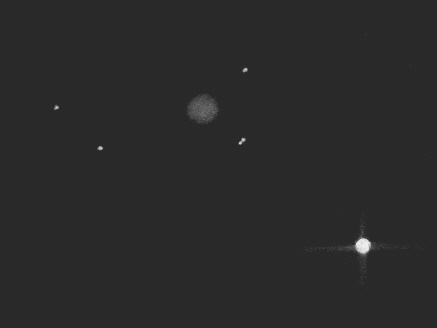
Observer: Mark G.Birkmann
Your skills: Intermediate (some years) Date/time of observation: 1/14/2000, 8:10 UT, 2:10 CST Location of site: New Haven, Missouri (Lat ~38, Elev ~700 feet) Site classification: Rural Sky darkness: 5 <1-10 Scale (10 best)>
Seeing: 6 <1-10 Seeing Scale (10 best)> Moon presence: None - moon not in sky Instrument: 40" f/5 dob Magnification: 235, 470 Filter(s): orion ultrablock Category: Planetary nebula. Class: Constellation: Pupis Data: mag 13.6 size 40" Position: RA 8:8m 44s DEC -19:14'
Description: This planetary is easily found 4' west of the 4th mag. star 16 pupis. At 235x it was faint, but visible with direct vision. With the Orion ultrablock filter the nebula appeared very bright and somewhat larger, even with 16 pupis in the field of view. The nebula was grey, had a uniform surface brightness, no hint of structure or of a central star, and had indistinct edges. Interestingly, Steve Gottlieb noted in the autumn 1988 issue of DeepSky that for some unkown reason this nebula wasn't identified until 1975. This would be understandable if it were only visible in very large scopes but he reported it as easily visible in his 13.1" scope with OIII filter. If this object escaped detection for so long might there be others?
Note added 1-22-2000
I should probably add that Sa 2-21 was previously misclassified
as a galaxy
in the MCG (-3-21-4). It wasn't until 1975 that
it was "discovered" to be a
planetary. Unfortunately, that means that amateur
sky plotting software such
as TheSky shows both a planetary and a galaxy at the
position of Sa 2-21!
Steve Gottlieb
Adventures in Deep Space
NGC/IC Project
http://redshift.home.pipeline.com/
http://www.ngcic.org/